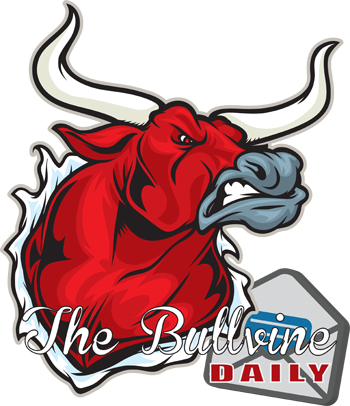U.S. butterfat exports double, reshaping dairy profits. Discover why component-focused farming now determines survival in volatile global markets.
EXECUTIVE SUMMARY: The U.S. is experiencing an unprecedented “Butterboom,” with butterfat exports more than doubling in 2025 due to a 34% price discount versus global competitors. Surging milk production, genetic advances boosting butterfat levels, and voracious North American demand-especially Mexico’s 9,500% AMF spike-fuel the frenzy. Yet reliance on Canada/Mexico and escalating trade wars with China pose major risks. The boom exposes a harsh truth: Farmers prioritizing volume over components risk extinction as markets reward fat efficiency. USDA forecasts suggest turbulent pricing ahead, demanding strategic shifts to protect margins.
KEY TAKEAWAYS:
- Price Wars Drive Exports: U.S. butter trades at $1.20/lb below global rates, making exports irresistible despite domestic oversupply.
- Component Revolution: Herds averaging 4.17% butterfat (up 13% since 2000) outearn volume-focused operations through premium pricing.
- North American Dominance: 95% of AMF growth targets Mexico/Canada-a efficiency win but a policy risk timebomb.
- Trade Policy Wildcards: China’s 125% tariffs on dairy highlight vulnerability, though butterfat dodges direct hits… for now.
- Survival Strategy: Milk checks favor fat optimization via genomics, heat abatement, and export-market vigilance.

Forget what you think you know about dairy markets. The U.S. is amid a butterfat export explosion-one that’s rewriting the rules and exposing a hard truth: Chasing volume alone is a losing game. If you’re not maximizing components, you’re not just leaving money on the table-you’re risking your future.
Butterfat Tsunami: The Numbers No One Saw Coming
Let’s cut through the noise. In the first quarter of 2025, U.S. butterfat exports didn’t just rise detonated, more than doubling the combined totals of 2023 and 2024. That’s not growth. That’s a market earthquake.
January exports up 145%. February? A jaw-dropping 236%. For context, 2024 saw a “mere” 28% increase in butterfat exports. The 7,101 metric tons of butterfat shipped abroad in January alone marked the most significant volume exported in any month since 2014.
You’re already two steps behind if you’re still playing by last year’s playbook.
Why does this matter? Because the old “just make more milk” mantra is dead weight.
The market is screaming for high-component production; those who listen will thrive. Those who don’t? What happens to cows that can’t compete in the parlor?
Why Are We Flooding the World with Cheap Butterfat?
Here’s the unvarnished truth: We’re exporting so much butterfat because, right now, U.S. butter is dirt cheap compared to the rest of the world. By February 2025, our butter was trading at a staggering 34% discount to global prices.
The CME spot price was $2.33/lb, while German and Oceania butter hovered around $3.50–$3.70/lb. That’s more than a dollar-per-pound difference.
Why such a gap? Because we’ve been pumping out butterfat like there’s no tomorrow to more cows, better genetics, and a relentless focus on component yields.
Our processors have kept the churns spinning, building inventories even as exports set new records. It’s like filling every bulk tank on the farm and then realizing you still have more milk coming down the pipeline.
Conventional wisdom says high exports mean high prices. Not this time. Supply is so robust that even record-setting demand can’t keep prices afloat.
The USDA’s latest forecast puts 2025 butter prices at just $2.445 per pound, down 7 cents from their previous estimate. That’s substantially below global competitors, maintaining our export advantage.
If you’re still betting on price rebounds without addressing your herd’s component profile, you’re betting the farm on a busted flush.
The Component Revolution: Are You Still Milking Yesterday’s Cows?
Let’s get real. The butterfat boom isn’t about making more milk- it’s about making better milk.
Average U.S. butterfat hit 4.17% in 2024, up from 3.68% in 2000. That’s a 13% jump in fat concentration. In the Upper Midwest, 4.0% is the new normal. Some progressive herds in Texas are pushing 4.5% with specialized nutrition strategies.
If your bulk tank is still stuck in the 3.6% range, you’re milking for the past, not the future.
What’s driving this component revolution? Genomics, precision nutrition, and a willingness to cull underperformers. The herds that are thriving are the ones that treat low-component cows like a leaky vacuum line-something to fix, not tolerate.
Still, think “more pounds” is the answer? Would you rather haul more water or butterfat to the plant? Only one pays the bills these days.
The Other Side: Why Some Producers Still Focus on Volume
Not everyone is jumping on the component bandwagon. “Component-focused breeding requires expensive genomic testing and specialized nutrition,” argues Jim Wentworth, a third-generation Wisconsin dairyman who still targets volume.
“When you’re running tight margins, adding a few more cows is sometimes easier than overhauling your genetics program completely.”
Wentworth represents a segment of producers who face real barriers to component optimization, including older facilities, limited capital for genetic improvements, and milk contracts that don’t adequately reward fat and protein.
There’s also the feed efficiency argument. Cows producing higher volume (albeit with lower components) can sometimes convert feed to revenue more efficiently on operations where fixed costs are already optimized.
However, critics acknowledge that long-term trends favor components. As USDA data shows, butterfat accounted for 57% of total Federal Order component value in late 2024, compared to just 36% for protein.
Export Markets: Boon or Bust Waiting to Happen?
Let’s talk risk. Canada and Mexico are soaking up most of our butterfat exports, primarily anhydrous milkfat (AMF), and Mexico’s demand exploded by 9,500% in February alone. That’s not a typo.
Butter exports to Canada jumped 105% year-over-year in February, while MENA (Middle East/North Africa) regions saw extraordinary growth of 4,160%.
But here’s the kicker: This concentration is a double-edged sword. Sure, it’s efficient, like running one high-producing cow instead of three average ones. But what happens if a trade spat slams the border shut?
Suddenly, all that butterfat comes flooding back home, and prices tank. Remember the pain when China slapped tariffs on the U.S. whey? That’s the kind of market whiplash you can’t afford to ignore.
Unlike the situation with China, where tariffs on butterfat have minimal impact (since they import little from us), potential disruptions with Canada or Mexico would hit immediately and hard. With total U.S. butterfat exports projected to grow less than 1% in 2025, according to USDA forecasts, the current pace can’t continue forever.
Case Study: How One Pennsylvania Farm Capitalized on the Butterboom
When Tom and Maria Henderson of Sunrise Dairy in Lancaster County, PA, noticed the shifting component values in their milk check three years ago, they decided to pay dividends today.
“We completely overhauled our breeding program to focus on fat and protein PTAs rather than just milk volume,” explains Tom. “We also brought in a nutritionist who specializes in butterfat optimization.”
The results speak for themselves: Their herd now averages 4.3% butterfat, up from 3.8% in 2022, while maintaining a respectable volume. Combined with strategic culling of their lowest-testing cows, they’ve increased component revenue by 18% while reducing feed costs by 4%.
“During the current export boom, our milk check looks much different than our neighbors who chased pounds instead of components,” Maria notes. “Even as Class prices fluctuate, our component premiums provide stability.”
The Hendersons admit the transition wasn’t cheap or straightforward. “The genomic testing and semen costs were significant upfront investments,” Tom acknowledges. “But the three-year ROI has been undeniable.”
Are You Still Ignoring Global Signals?
It’s time for a reality check. If you’re not tracking global butter prices, inventory reports, and trade policy, you’re flying blind. The days when you could focus solely on your local market are over.
USDA forecasts butter prices to stay below 2024 averages-$2.445 to $2.65/lb. Income Over Feed Cost (IOFC) margins have slipped from $15/cwt to $13.12/cwt and could dip below $12/cwt this summer.
Meanwhile, cull cow prices are flirting with $145/cwt, tempting some to thin the herd. But with heifer inventories tight, expansion isn’t a slam dunk.
The milk production forecast 2025 was recently raised by 700 million pounds, to 226.9 billion pounds, on larger cow inventories and slightly higher milk per cow. This increased supply is keeping prices in check despite record exports.
So, what’s your move? Keep hoping for a price rebound, or double down on component efficiency and cost control?
The Sacred Cow That Needs Slaughtering: “Volume Is King”
Here’s where we get controversial. The industry’s obsession with volume is outdated, dangerous, and lazy. The real money is in components-especially butterfat. Yet, too many producers are still chasing yield at the expense of quality.
Ask yourself: Are you selecting sires for Net Merit and component PTAs or just for raw milk pounds?
Are you feeding for rumen health and fat synthesis, or are you still stuck on crude protein?
Are you managing heat stress and ration changes to protect summer butterfat, or are you just hoping for the best when the thermometer climbs?
It’s time to cull the “milk is milk” mentality. Not all milk is created equal in today’s market, and the difference appears in your milk check.
Component Strategy vs. Volume Focus: What Makes More Money?
| Strategy | Advantages | Disadvantages | Long-Term Outlook |
| Volume-Focused | Easier to measure, Lower breeding costs, Simpler management | Higher hauling costs, Lower component premiums, more water, less value | Increasingly vulnerable as component pricing spreads widen |
| Component-Optimized | Higher price premiums, Export-ready milk, better feed efficiency | Higher genomic testing costs, more complex nutrition, and Initial yield reduction are possible | Positioned for profitability in markets increasingly valuing fat and protein |
What’s Your Summer Game Plan?
Don’t forget the seasonal wild card—butterfat peaks in winter and slumps in summer. If you’re not proactively managing heat abatement, ration tweaks, and cow comfort, you’re returning money to the plant when it matters most.
Smart operators are already adjusting feeding strategies and investing in cooling to keep components high when the heat is on. Are you?
Recent USDA data shows March 2025 milk production increasing by 0.9% compared to March 2024, with an additional 8,000 dairy cows bringing the total to 9.40 million. However, more concerning for component producers is the seasonal variation that’s coming.
When summer hits, and butterfat naturally declines, the operations that maintain components through proper cooling, feeding, and management will capture a larger share of the milk check. Those relying on volume alone will watch their margins shrink faster than a Holstein in a heat wave.
Component Calculator: What’s That Extra Fat Worth?
Want to see how component improvements impact your bottom line? Try this quick calculation:
For a 100-cow herd averaging 80 lbs of milk/day:
- At 3.5% butterfat = 280 lbs fat/day
- At 4.0% butterfat = 320 lbs fat/day
- Difference: 40 lbs of butterfat daily
- At $2.445/lb butter price (USDA forecast), that’s approximately $49 more daily revenue or $17,885 annually
How much would raising your components by 0.5% be worth to your operation? Do the math, then ask yourself if you’re leaving that money on the table.
The Bottom Line: Are You Ready to Ride the Butterboom-Or Get Washed Away?
Let’s stop sugarcoating it. The U.S. butterfat export boom is a wake-up call. Component optimization isn’t just a smart move-it’s survival. The old playbook is obsolete.
Mega-dairies (1,000+ cows) now control 66% of U.S. milk sales. Structural change accelerates, and the winners focus on efficiency and component optimization.
If you’re not challenging every aspect of your operation- from genetics to nutrition to marketing-you’re not just leaving money on the table. You’re risking your future.
So, here’s the call to action:
Stop worshipping at the altar of volume. Start milking for margin. Challenge your nutritionist, your breeder, and your assumptions. Track the global market like your paycheck depends on it- because it does.
Lock in feed costs where possible. Consider hedging 40-60% of your Q2 milk production. Study the nutrition strategies that have helped Texas producers achieve 4.5% butterfat tests.
Will you keep milking for yesterday’s market, or are you ready to lead the charge into the new era of component-driven profitability? The Butterboom won’t wait for stragglers. It’s time to decide: Will you ride the wave or get left behind?
Learn more:
- Cream Crisis: Can U.S. Dairy Exports Drain the Butterfat Lake?
Explores the challenges of managing a butterfat surplus, price disparities, and long-term strategies for balancing domestic overproduction with global demand. - Why Milk Components Trump Production in Unlocking Profits
Details the genetic and management shifts driving the component revolution, with data on how butterfat and protein now dominate milk check valuations. - Component Boom Reshaping Dairy Markets: Fat Surge Pushes Cream Values Lower as Export Doors Swing Open
Analyzes how record butterfat yields are depressing domestic cream prices while fueling unprecedented export growth, with actionable strategies for farmers.
 Join the Revolution!
Join the Revolution!
Join over 30,000 successful dairy professionals who rely on Bullvine Weekly for their competitive edge. Delivered directly to your inbox each week, our exclusive industry insights help you make smarter decisions while saving precious hours every week. Never miss critical updates on milk production trends, breakthrough technologies, and profit-boosting strategies that top producers are already implementing. Subscribe now to transform your dairy operation’s efficiency and profitability—your future success is just one click away.







 Join the Revolution!
Join the Revolution!




